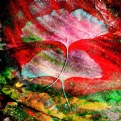Heya everyone,
The other week, I was working on an image in the darkroom. It is a night shot of the San Diego Balboa Park.. Apparently, a few of the areas rendered too dark.. I needed a more 'open-envoronment' feeling without losing too much of my contrast, so I tried waterbath development. This procedure worked fine on FB, but when making preliminary prints on RC, I figured it would work too. But I started getting streaks on the entire print. Initially, I thought it was due to safelight exposure, but finally concluded (after a few tries with no luck) that with such a short development time on RC paper, while lifting the print to be transferred to the waterbath development, the developer running down the print continued developing certain areas of the print, creating the streaks. Is it simply impossible to perform waterbath development on RC paper? Or can someone recommend an alternative? In the end, I had to drop from a grade 2 to 1 1/2, where I acheived the results I was looking for, but having to compromise contrast in the midtone reigon. Any advice would be appreciated. Andy
PS. The photo I was printing: http://djklmnop.tripod.com/stuff/balboanight.jpg
|
















